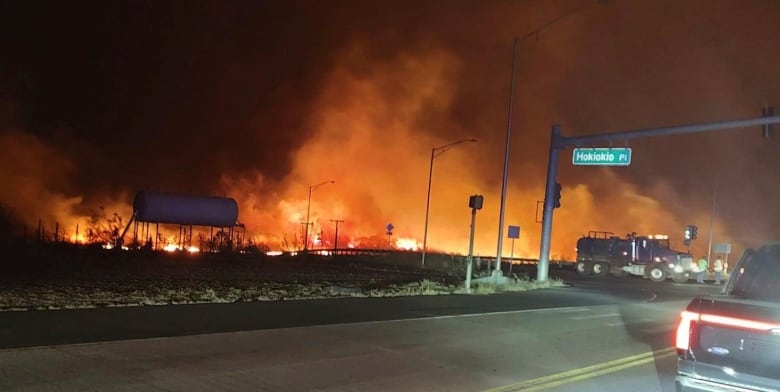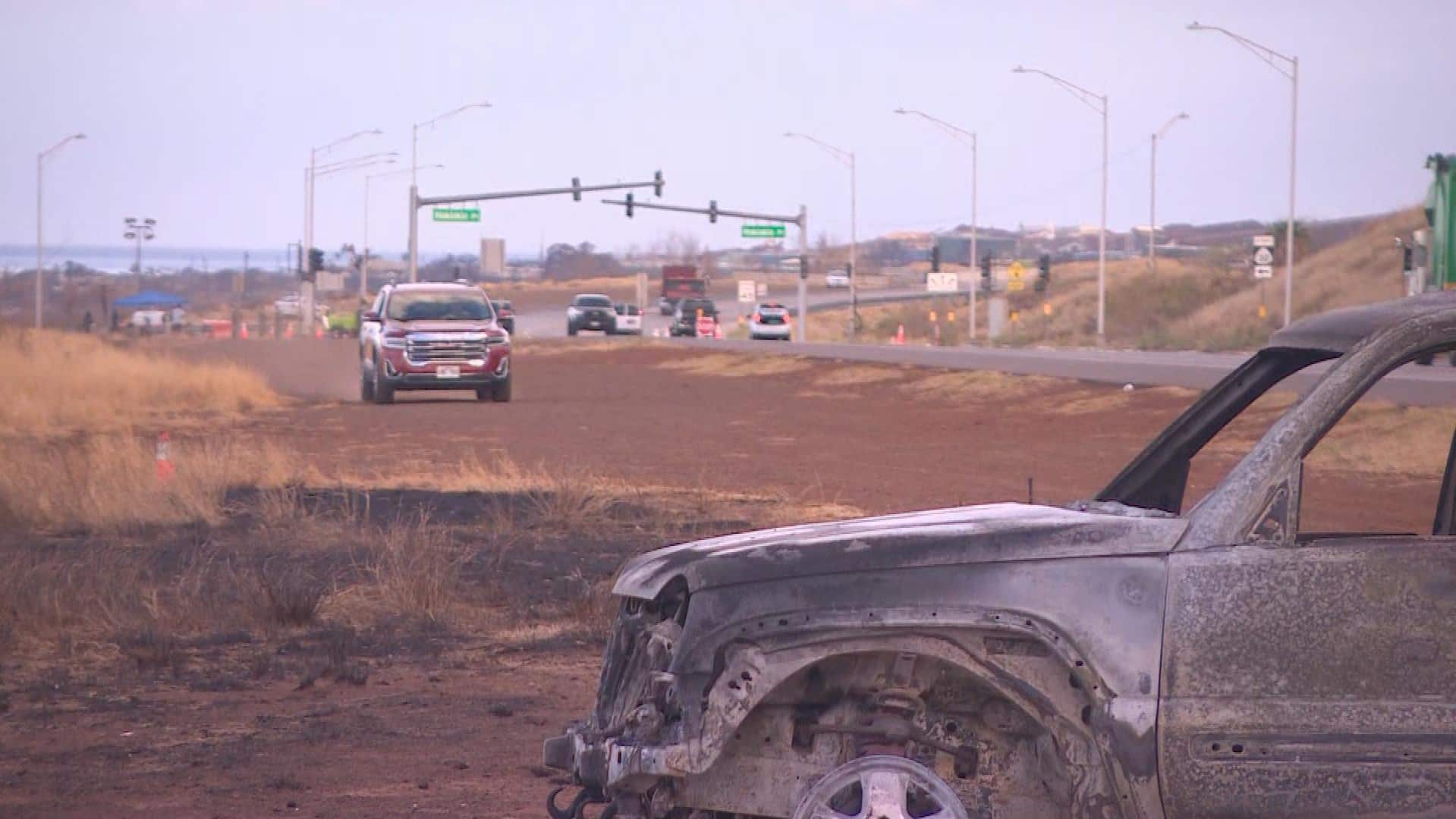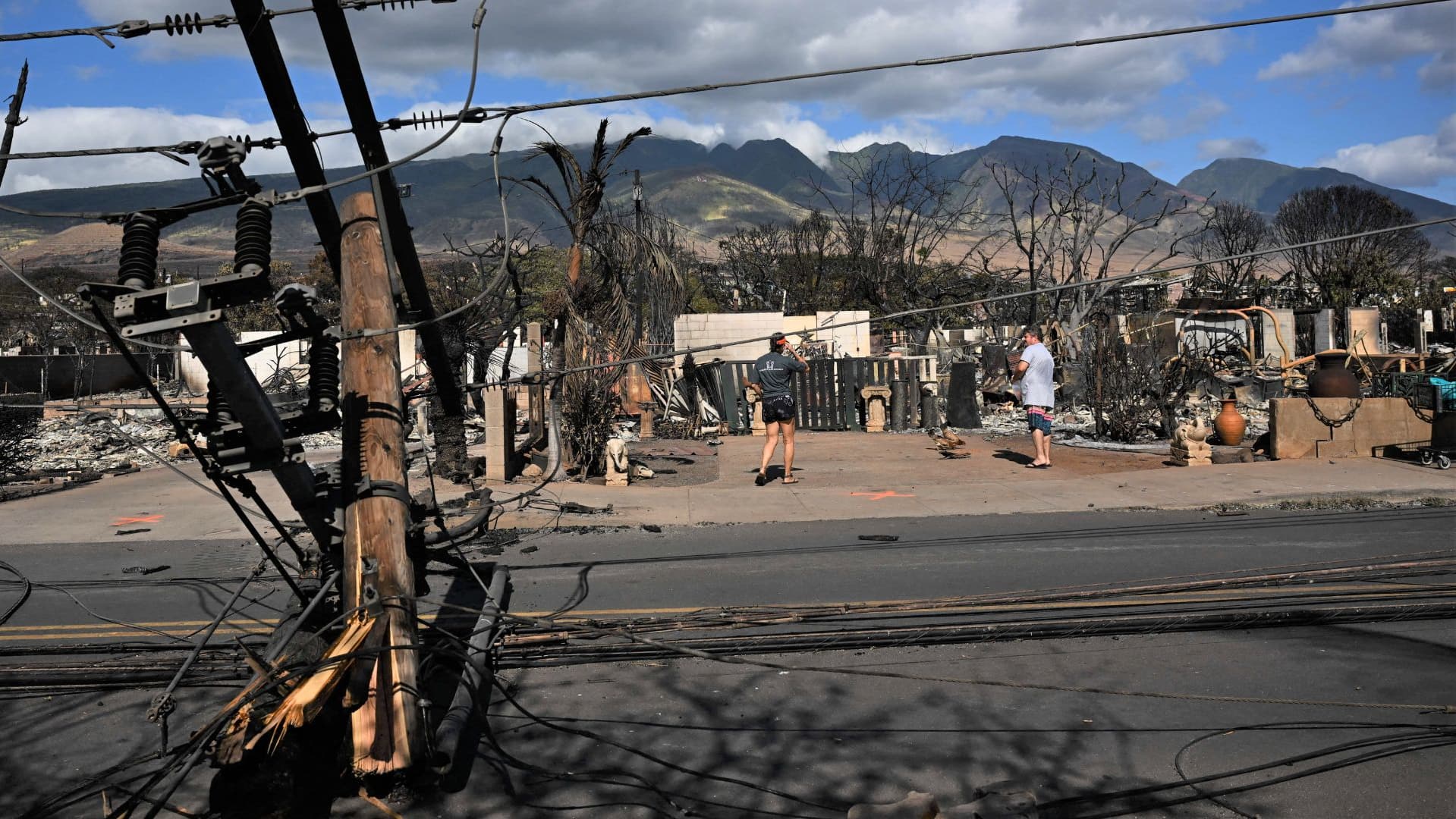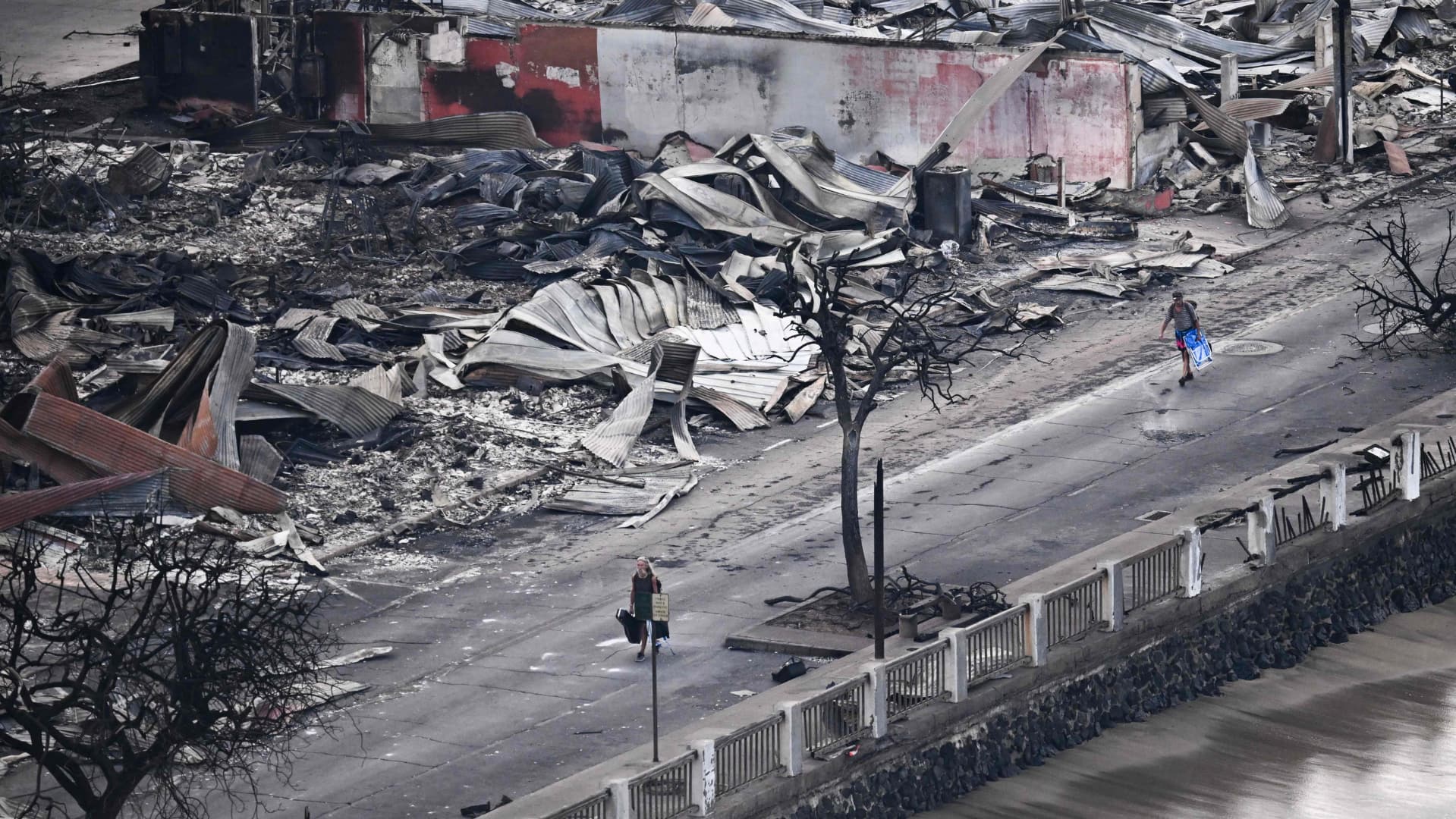Why do wildfires often ignite a firestorm of conspiracy theories?
It’s yet to be determined what exactly ignited the ferocious wildfires that ravaged Maui and destroyed much of the historic town of Lahaina last week, but online conspiracy theorists have plenty of thoughts about how — and why — the deadliest fires in Hawaii’s history were started.
Conditions were already ripe for wildfires, with a combination of persistent dry weather and drought, when Maui was hit with powerful winds on Aug. 8, sending flames racing across swaths of the island.
But the tragedy has spurred social media posts that would have you believe that it was a laser beam from space that sparked the devastating blaze or that the disaster may be a part of a land grab or a sinister ploy to develop a 15-minute city on the tropical island — familiar conspiracy theories that have thrived in times of disaster.
There is no proof any of these are true — often they can easily be debunked — but theories like these can thrive in times of uncertainty after a disaster strikes, say experts, as people try to make sense of a tense and emotional situation and anxiously look for a cause to pinpoint.
“Everybody is susceptible to mis- and disinformation, but in different ways and for different reasons,” said Samantha Bradshaw, an assistant professor at the school of international service at American University in Washington, D.C.
But wildfires in particular, she said, present a unique opportunity for rumours and false narratives to spread.
“They are just so visible and so devastating and so violent in their effects, it’s really hard for people to not pay attention to news about them.”
CBC News’s Lindsay Duncombe is in Lahaina, Hawaii, and provides a small roadside glimpse at some of the destruction the area suffered because of devastating wildfires..
The space laser theory
The wildfires damaged or destroyed more than 2,200 buildings in Maui and left thousands of people displaced. By Wednesday morning, the death toll had topped more than 100 people, although hundreds more remain unaccounted for.
The spread of false and misleading information during a tragedy like this is “deeply upsetting,” said Mike Rothschild, a journalist and author based in Los Angeles who writes about conspiracy theories and fringe beliefs.
Various posts on X, the social media platform formerly known as Twitter, purport to show a light beam and some sort of direct energy weapon sparking flames in Maui, using images from unrelated incidents. In one case, it was an image of a SpaceX rocket launch, while another used a video from a transformer explosion in Chile.

“What these conspiracy theories do is that they almost absolve people of any kind of human feeling other than anger,” Rothschild told CBC News.
Rothschild examines the viral laser conspiracy theory in his forthcoming book Jewish Space Lasers: The Rothschilds and 200 Years of Conspiracy Theories. Rothschild is not related to the famously wealthy family that is the focus of his book and the target of various antisemitic conspiracy theories.
The eyebrow-raising title is rooted in a 2018 Facebook post from U.S. Rep. Marjorie Taylor Greene, a Republican member of Congress who is widely known for her past embrace of QAnon conspiracies.
According to Media Matters for America, the now-deleted Facebook post suggested a wildfire raging in California at the time, one of the worst in the state’s history, could have been caused by a “laser beam or light beam coming down to Earth” from a solar generator in space. Greene also drew connections between the state’s electric utility, Pacific Gas and Electric Company (PG&E), and the Rothschild Inc. investment banking firm in the post.
While Greene, who shared the post two years before she was first elected to represent Georgia in Congress, never actually used the phrase “Jewish space lasers,” her critics frequently use it in reference to her claim.
Although the fire-starting laser conspiracy started years before Greene’s post, Rothschild said its popularity has surged since it was attributed to her.
A class-action lawsuit has been filed against Hawaiian Electric in the aftermath of deadly wildfires on Maui. The lawsuit alleges the power company ‘chose not to de-energize power lines’ during weather warnings.
Understanding how fires work
Mike Flannigan, a fire science expert at Thompson Rivers University in Kamloops, B.C., said the ease with which people can communicate disinformation, along with growing distrust in government, media and science, have created conditions for conspiracy theories to spread online like, well, wildfire.
“Often people see just one story and they accept that rather than, you know, official reports or scientists who’ve been studying it for 30 years,” he said.

He said it’s quite simple to understand how wildfires work, explaining there are only “three ingredients” needed for a blaze to erupt. Those are fuel — dry vegetation — oxygen and ignition.
It’s that last one that opens the door to much speculation.
While lightning can be responsible in many situations, when conditions are right, it’s humans who cause most fires globally, he said.
That doesn’t necessarily mean arson, as was rumoured in Alberta this spring. Alberta Premier Danielle Smith committed to investigating such claims during an interview in June, but would not acknowledge the role of human-caused climate change in creating the conditions for this year’s unprecedented fire season.
A human-caused fire does not necessarily indicate arson.
It simply refers to a fire being ignited as a result of human activity, which Flannigan said could be anything from agricultural burning to sparks from a car muffler or recreational vehicle — even a gender-reveal party gone wrong, as was the case with a fire that burned 9,300 hectares in California two years ago.
The cause of the Maui wildfires is still under investigation, but some evidence suggests power lines knocked down by strong winds may have played a role.
Many Lahaina wildfire survivors say they had no official warning before the blaze was upon them. As the number of people killed continues to rise, Andrew Chang explains why there are growing questions about the emergency response.
Finding truth in conspiracy theories
Both Rothschild and Bradshaw acknowledge that conspiracy theories may actually be rooted in some degree of truth.
The idea that solar energy could be beamed from satellites in space back to Earth’s surface, for example, is something that has been explored for a number of years, Rothschild said, but using radio waves or microwaves, not lasers.
That element of truth can help fan the flames of a conspiracy theory, adds Bradshaw, saying it can become even more difficult to debunk if it becomes centred around one’s identity or personal values and political beliefs
“It really comes down to our individuality, how we see the world, where we fit into our various communities,” Bradshaw said, “because these human biases that we all hold can be exploited in different ways and at different times.”





